The following review and recap of Star Trek: Lower Decks Season 4, Episode 6, “Parth Ferengi’s Heart Place,” contains spoilers.
If nothing else, “Parth Ferengi’s Heart Place” certainly has the season’s best title to date.
It also occupies the same slot in the fourth season of Lower Decks that “Hear All, Trust Nothing” did in the third season. Both are nostalgic celebrations of Deep Space Nine in a show that tends more towards the aesthetic of The Next Generation or Voyager. While “Hear All, Trust Nothing” brought back Kira Nerys (Nana Visitor) and Quark (Armin Shimerman), “Parth Ferengi’s Heart Place” brings back its Bajoran and Ferengi pairing of Leeta (Chase Masterson) and Rom (Max Grodénchik).
Both “Hear All, Trust Nothing” and “Parth Ferengi’s Heart Place” demonstrate the production team’s obvious love and affection for Deep Space Nine. Unfortunately, the two episodes also illustrate Lower Decks’ fundamental misunderstanding of that earlier show. Lower Decks is very much on the same wavelength as The Next Generation and Voyager, but Deep Space Nine is a show that comes from a unique place with a perspective that is radically different from its contemporaries.
How Star Trek: Deep Space Nine Changed the Ferengi
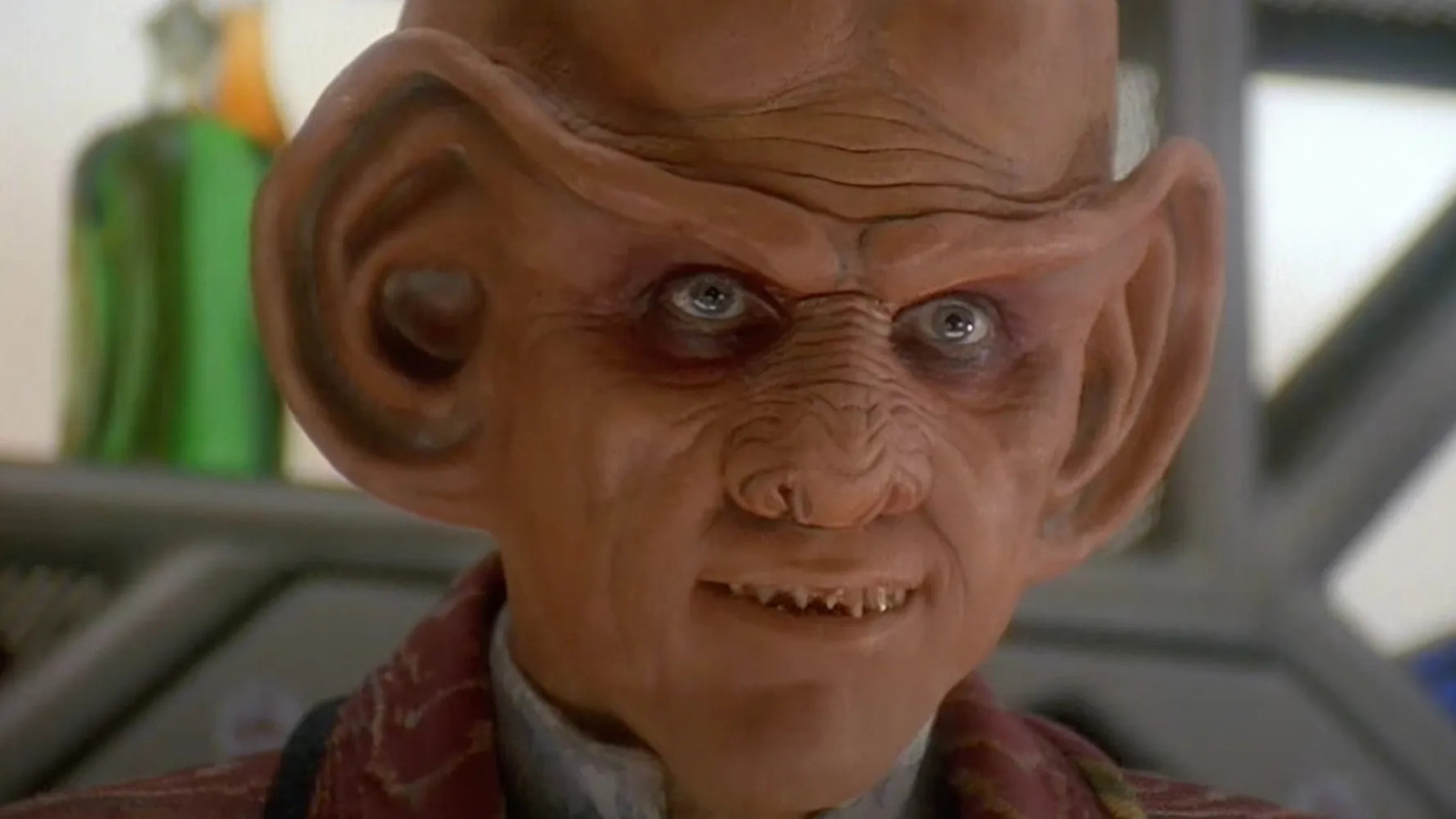
Deep Space Nine‘s unique take on the Ferengi is most apparent in the central plot of “Parth Ferengi’s Heart Place”, which hinges on the Ferengi Alliance applying for membership of the Federation. The Ferengi were famously created as potential antagonists on The Next Generation, but their introduction was so disastrously ill-advised that they were reduced to comic relief. On Deep Space Nine, showrunner Ira Steven Behr took a perverse interest in the Ferengi, and would devote multiple episodes each season to their politics and culture.
The Ferengi were framed as a hyper-capitalist society, with Data (Brent Spiner) likening them to “Yankee Traders.” For Behr, the hook was much more contemporary. The Ferengi “were 20th century beings” and Quark and Rom “were 20th century human beings” in a universe populated by hyper-evolved beings. The Ferengi were greedy, misogynistic, cowardly, manipulative, untrustworthy and selfish. In the utopian Star Trek universe, they were comically awful.
However, over the course of Deep Space Nine, the Ferengi changed – both individually and culturally. Rom’s son, Nog (Aron Eisenberg), joined Starfleet. Rom quit his brother’s bar and became an engineer working under Chief Miles Edward O’Brien (Colm Meaney). Grand Nagus Zek (Wallace Shawn) eventually oversaw a host of radical social changes on Ferenginar, allowing women to wear clothes and hold property, banning monopolies, and naming the gentle Rom as his successor.
Related: Right Now, the Best Star Trek is Animated Star Trek
From the outside, it might seem the Federation exerted a significant influence over Ferengi culture. Indeed, Deep Space Nine would often suggest that peace with the Federation had led to the cultural and political decline of the Klingon Empire, an erosion of its identity and influence. Certainly, Quark himself would frame it as such, likening the Federation to root beer in “The Way of the Warrior” and insisting that his bar would remain the last vestige of old Ferenginar in “The Dogs of War.”
Just looking at that summary of events, one might assume that Ferenginar was always destined to become a member of the Federation. “We’re not dealing with the old Ferenginar anymore,” boasts Admiral Vassery (Fred Tatasciore). “Rom and Leeta have brought so much progressive change it makes Moab IV inside the dome look like Moab IV outside the dome.” If one reads the Star Trek franchise as a story about the arc of history, it always bends towards Federation membership.
That said, that’s not how Deep Space Nine actually understood the universe. Deep Space Nine had its own utopian view, but was always careful to divorce from some romantic notion of the Federation as an institution. The characters on Deep Space Nine generally tended to learn and grow across the show’s seven seasons, with characters like Quark, Odo (René Auberjonois), Garak (Andrew Robinson) and Damar (Casey Biggs) becoming better people almost against their own better judgment.
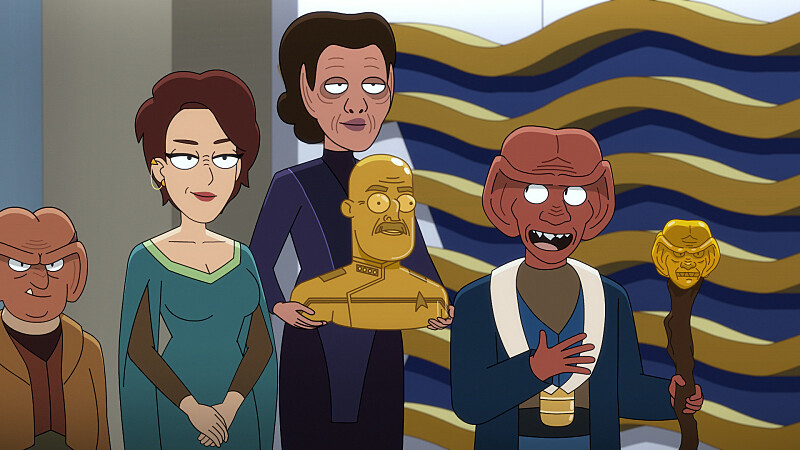
Episode 6, season 4 of Lower Decks streaming on Paramount+, 2023. Photo Credit: Paramount+
However, that character growth wasn’t always in direct response to the Federation. Indeed, characters like Benjamin Sisko (Avery Brooks) and Julian Bashir (Alexander Siddig) ended up quite wary of Starfleet and the Federation as institutions by the end of the show. Instead, Deep Space Nine argued for something approaching a genuine marketplace of ideas, that creating an environment where diverse and distinct cultures could share common ground and be exposed to different perspectives would lead to the best outcome for all.
Deep Space Nine was a strongly postcolonial text, and that meant recognizing that the Federation itself could be an imperialist power. In the series premiere, Sisko was assigned to the station to help guide Bajor into the Federation. However, midway through the fifth season, in “Rapture”, Sisko is haunted by visions that warn him that Bajor will be destroyed if it gives up its sovereignty to a foreign power. He is ultimately vindicated when the Dominion seize the station in “Call to Arms.” Even Rom never joined Starfleet, serving instead in the Bajoran Militia.
Bajor never joins the Federation in Deep Space Nine. Many Star Trek fans saw this as flaw rather than a choice. In his retrospective review of the finale, Keith R.A. DeCandido complained, “The final episode of the series should damn well have had Bajor actually entering the Federation.” Tie-in writers tried to “correct” this perceived error in the post-series spin-off novels. However, Behr rejects this criticism, asking, “Why does Bajor have to join the Federation?’ Why is that the be-all end-all? Why is that the success story? Isn’t it more interesting if what happens isn’t said?”
A cynic might argue that Behr is being defensive here, making excuses for failing to fire the show’s biggest Chekhov’s Gun. However, Behr is remarkably candid and clear-eyed in assessing his successes and failures. Unlike the showrunners on The Next Generation and Voyager, he has acknowledged his own failures when it comes to queer representation in Star Trek and talked openly about his blindness to sexual harassment on the franchise. Behr admits his mistakes. This is not one of them.
Lower Decks Misunderstands What Deep Space Nine Said About the Ferengi
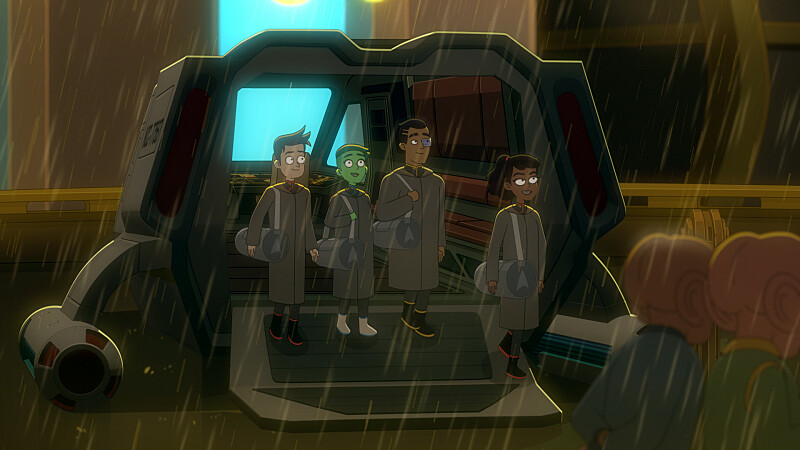
L-R Jack Quaid as Brad Boimler, Noël Wells as DVana Tendi, Eugene Cordero as Rutherford and Tawny Newsome as Beckett Mariner in episode 6, season 4 of Lower Decks streaming on Paramount+, 2023. Photo Credit: Paramount+
The fact that Bajor, a planet that just emerged from a brutal Cardassian Occupation, ultimately doesn’t surrender its autonomy to the more benign (or “soft”) imperialism of the Federation is central to Deep Space Nine’s core themes. Building an episode of Lower Decks around the potential entry of Ferenginar into the Federation represents a fundamental misunderstanding of what Deep Space Nine is about. Worse than that, it presses that misunderstanding using an alien species that is close to Behr’s heart.
There are, admittedly, some small clever touches here. Rom’s obsession with baseball is not only a wonderful inside joke referencing “Take Me Out to the Holosuite”, it is also a tacit acknowledgement of the Federation’s cultural imperialism. As with Quark’s observations about the insidious power of root beer, Rom’s pantomimed love of baseball equates the Federation’s diplomatic influence to that of the United States, a nation that exports its culture along with its military forces.
Baseball has long been a tool of American soft power. As Bill Brown noted, with the spread of baseball, “battlefields became ball fields.” Christopher Kelly observed that “[o]ver and over again, countries that have been occupied by American forces have turned into baseball playing countries.” Richard Guilianotti has written about how “baseball was spread through ‘neo-colonial’ spheres of American influence, notably Central America and the post-war Far East.”
Rom and Leeta using Admiral Vassery’s arrogance to swindle him, feigning their adoption of Federation cultural moors as a way to take advantage of an outside power seeking to extend its reach, is a clever plot hook. It recalls how Behr cheekily introduced the Dominion on Deep Space Nine through the Ferengi in “Rules of Acquisition.” The central joke here is Vassery’s assumption of his moral, cultural and intellectual superiority over the Ferengi.
However, the punchline doesn’t land, because “Parth Ferengi’s Heart Place” ends with Captain Carol Freeman (Dawnn Lewis) getting one over on Rom and Leeta. The episode doesn’t end with the Federation and the Ferengi Alliance as equals, with the Federation accepting that the Ferengi are not a culture to be subsumed. Instead, it ends with Freeman proving that she is smarter than Vassery. The absorption of Ferenginar into the Federation is uncritically embraced as a happy ending.
Related: Starfield Is the Combination of Star Wars and Star Trek I’ve Always Wanted
It’s frustrating, because the third season of Lower Decks had a broader perspective. It understood that there could be valid ways of living outside the Federation, as demonstrated by Petra Aberdeen (Georgia King) in “Reflections” or by Ornara’s refusal to accept Federation aid in “Trusted Sources.” In “The Stars at Night”, Mariner (Tawny Newsome) accepts that Aberdeen’s way of life outside Starfleet – endorsed by Jean-Luc Picard (Patrick Stewart) – is just as valid as her own inside Starfleet.
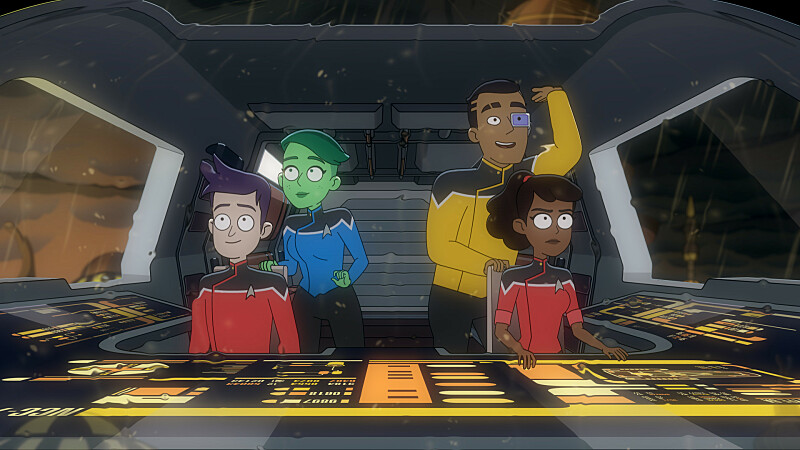
L-R Jack Quaid as Boimler, Noël Wells as DVana Tendi, Eugene Cordero as Rutherford and Tawny Newsome as Beckett Mariner in episode 6, season 4 of Lower Decks streaming on Paramount+, 2023. Photo Credit: Paramount+
It’s a shame. As with “Hear All, Trust Nothing”, the best parts of “Parth Ferengi’s Heart Place” have little to do with Deep Space Nine. The not-quite-fake romance between Tendi (Noël Wells) and Rutherford (Eugene Cordero) is charming, a classic sitcom plot. It’s a familiar set up, but Lower Decks leans into it. It may not be the most sophisticated source of humor, but there is something quite amusing about the episode giving its Ferengi characters names like “Quim” (TBC) or “Quif” (TBC). It is very silly, but there is nothing wrong with being silly.
Boimler (Jack Quaid) binge-watching lowest common denominator Ferengi programming is a delightfully self-aware joke about streaming. The Paramount logo gag is genuinely brilliant, and the observations about the ubiquity of “copaganda” and property shows in trash television are clever. “Cop Landlords” probably already has a five-season order at Warner Bros. Discovery. Even the Sluggo Cola advertisement, a riff on the classic “Beach Bully” template, is amusing.
However, the episode’s best plot follows Mariner as she continues to work through her tendency to self-sabotage. “Ransom is supportive of everything I want to do,” she confesses at the start of the episode. “For the first time in years, I have total autonomy and zero complaints.” Boimler asks, “So why are you sitting here, looking pissed off?” Her old friend Quim notes that Mariner is “stuck in a perpetual stage of immature rebellion” and “still picking fights to make sure [she gets] hurt.”
Despite being a half-hour animated comedy, Lower Decks has a stronger grasp on character than any of the modern live action Star Trek shows. As with “I Have No Bones Yet I Must Flee”, “Parth Ferengi’s Heart Place” presents Mariner as a complicated and multi-faceted individual. There is also something inherently utopian in this, something close to the perspective of Deep Space Nine. As an institution, Starfleet hasn’t always done right by Mariner, but her friends still want her to succeed.
“Parth Ferengi’s Heart Place” demonstrates that Lower Decks doesn’t really understand Deep Space Nine, despite its best intentions. That wouldn’t be a problem if it didn’t also invite comparisons to it. It is okay for different Star Trek shows to have different outlooks. As the episode’s work with Mariner demonstrates, Lower Decks has its own approach to and understanding of what it means to be Star Trek. It is much more compelling than watching it try to be Deep Space Nine.
For more Star Trek: Lower Decks recaps, discussions, and reviews, check out our coverage of Season 4, Episode 5, “Empathological Fallacies.”

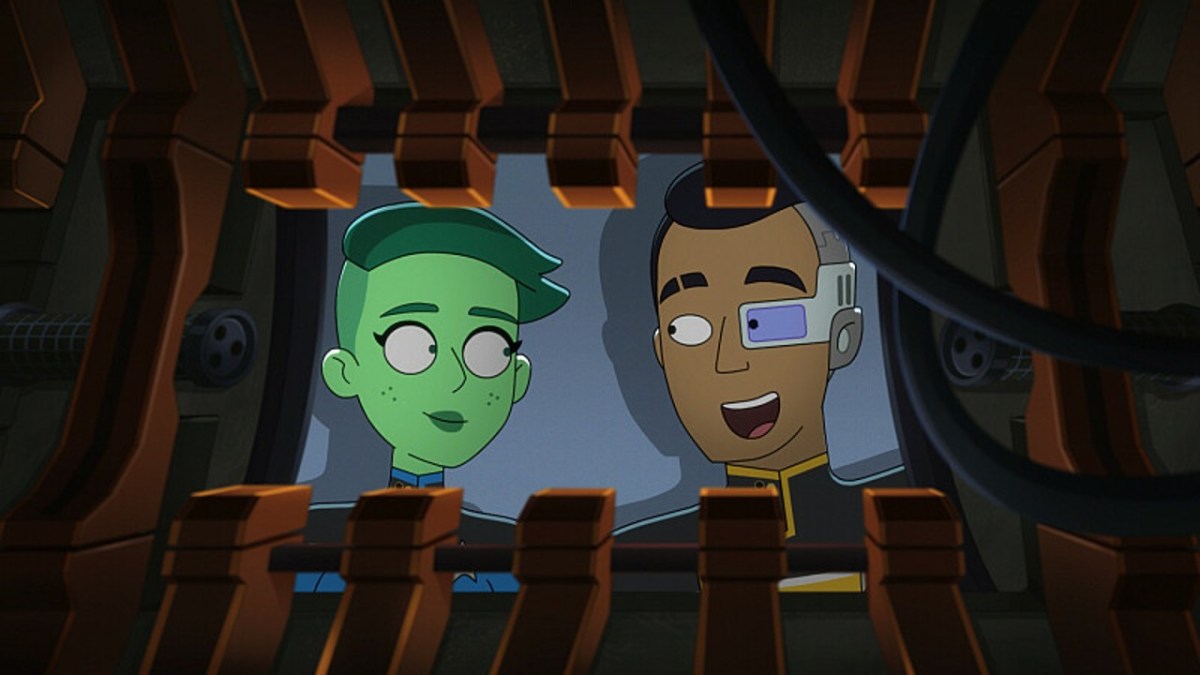




Published: Oct 5, 2023 09:00 am